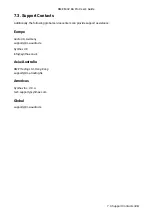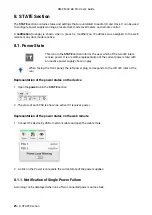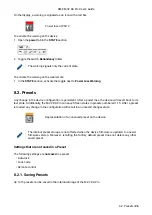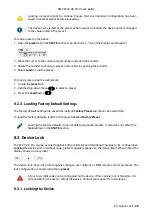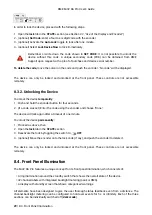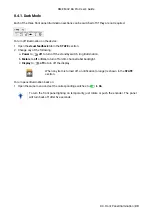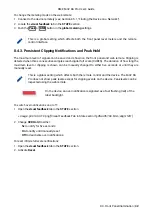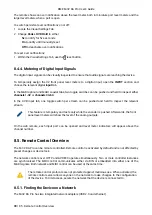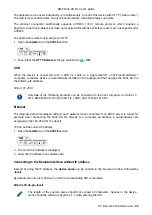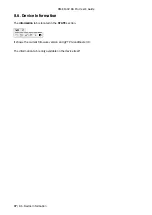
9. INPUT Section
The input section is used to inspect and configure the audio inputs of the device. A warning is displayed
when a digital input is not present but selected as clock master, or routed to an output and is either not
present or not in sync to the clock master. Related input settings, such as AVB stream size or MADI auto
input, can be configured here.
9.1. MADI Input
The M-32 DA Pro accepts up to two MADI signals, one electrical (BNC input) and one optical (SC input).
To connect a MADI signal:
1. Ensure that you have set the correct sample rate and clock source in the
CLOCK
section.
2. Connect the cable to the corresponding input.
3. Open a
MADI
tab in the input section to see the current LOCK and SYNC state.
9.1.1. MADI at High Sample Rates
The MADI standard (AES10) allows transport of audio at sample rates beyond 48 kHz by reducing the
number of available channels.
Double speed (88.2 kHz, 96 kHz)
Double speed audio signals can be transmitted and received in two different ways. Manufacturers can
implement one or both modes, usually referred to as "96k frame" and "S/MUX 2" or "legacy" mode. It is
important to use the same mode on both sender and receiver side because S/MUX 2 and legacy mode
are not compatible. Both modes transport the audio signal transparently.
96k frame
The so-called "96k frame pattern" (AES10) can be detected at the receiver side automatically. In this
mode, the frame numbers and corresponding user bits equal the number of channels submitted. The "56
Ch." setting corresponds to 28 audio channels at 88.2 kHz and 96 kHz sample rates. The "64 Ch." setting
corresponds to 32 audio channels at 88.2 kHz and 96 kHz sample rates.
S/MUX 2
Sample multiplexing (or S/MUX 2) describes a method to distribute two consecutive samples onto
neighboring channels. The MADI signal remains exactly the same as in single speed with 56 or 64
channels including its user-bits. The receiver decodes the audio signal by passing the samples of
channel 1+2 as two consecutive samples for channel 1, samples of channel 3+4 as two consecutive
samples for channel 2, and so forth. The amount of channels corresponds to the same as the 96k frame.
This format cannot be automatically detected at the receiver side.
RME M-32 DA Pro User’s Guide
9. INPUT Section |
38

